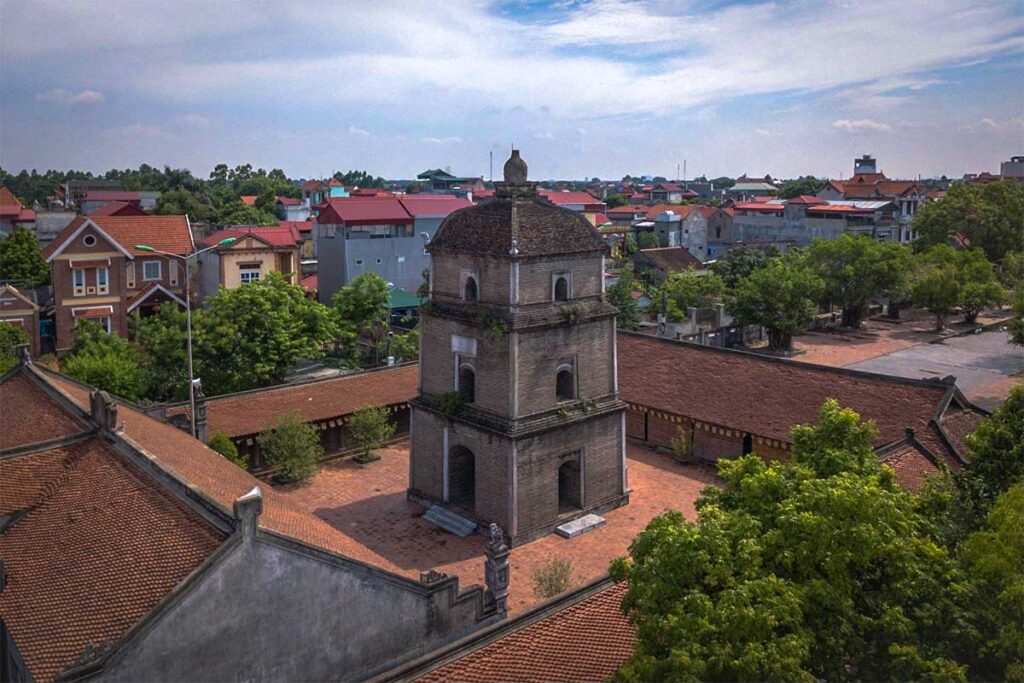What is Dau Pagoda like?
Dau Pagoda is a quiet religious site located about 25–30 km east of Hanoi, in Thanh Khuong Commune, Bac Ninh Province. It’s considered Vietnam’s oldest Buddhist pagoda, originally built in the 2nd or 3rd century AD, and situated near the former cultural and spiritual hub of Luy Lau.
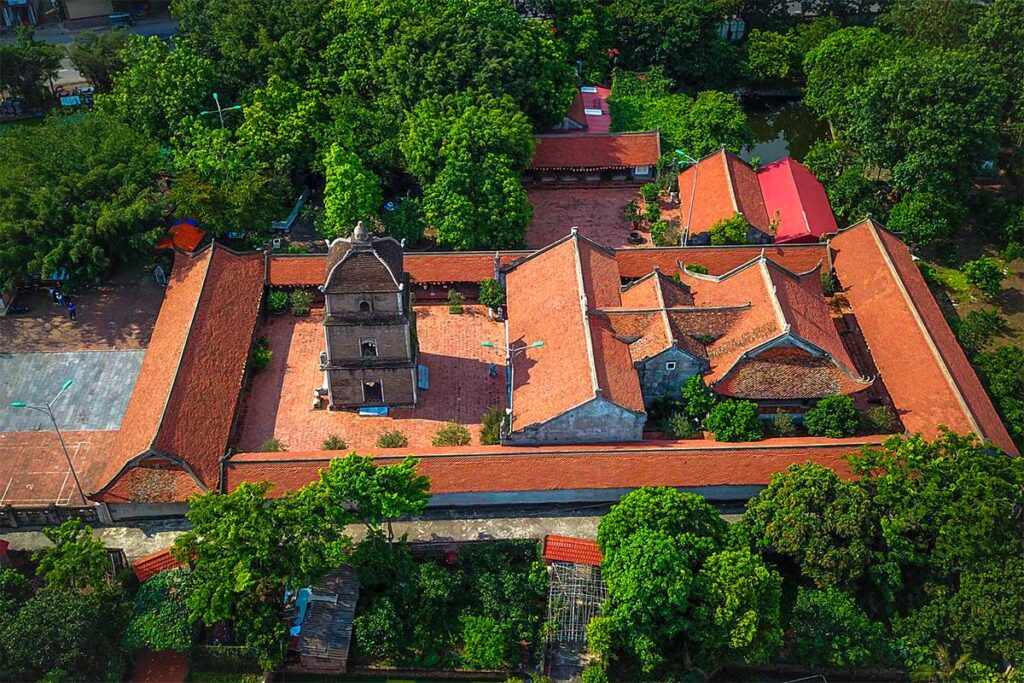
Today, the pagoda has a peaceful, local atmosphere, with ancient architecture, traditional worship practices, and occasional festivals. It’s not a polished tourist site, but if you’re interested in Vietnamese history, Buddhism, or older rural temples, it’s a quiet and worthwhile place to explore.
History of Dau Pagoda
Dau Pagoda was originally built between 187–226 AD, making it the oldest documented Buddhist temple in Vietnam. It was established during the early spread of Buddhism into the region, at a time when Luy Lau—a nearby ancient citadel—served as a major cultural and trade center. Luy Lau became a gateway for both Indian and Chinese Buddhist influences, turning Dau Pagoda into one of the earliest spiritual hubs in the Red River Delta.
The Legend of Man Nuong and the Cloud Guardians
Local legend ties the origin of the pagoda to a girl named Man Nuong, who was said to have given birth to a divine child after a chance encounter with an Indian monk named Khau Da La. From a sacred mulberry tree associated with her story, four guardian statues were carved—Phap Van (Cloud), Phap Vu (Rain), Phap Loi (Thunder), and Phap Dien (Lightning). These four deities are still worshipped at Dau and nearby temples, blending Vietnamese folk beliefs with early Buddhist traditions.
Restoration and Recognition
Throughout its long history, Dau Pagoda has undergone multiple restorations and expansions, particularly during the Tran and Le dynasties, when it was considered one of the region’s most sacred sites. Over the centuries, the pagoda has attracted monks, pilgrims, and royalty alike. In 2013, it was officially recognized by the Vietnamese government as a Special National Relic due to its architectural, cultural, and religious significance.
Highlights of Visiting Dau Pagoda
After learning about its long and storied past, here’s what you can actually see and experience today when visiting Dau Pagoda.
1. Hoa Phong Tower
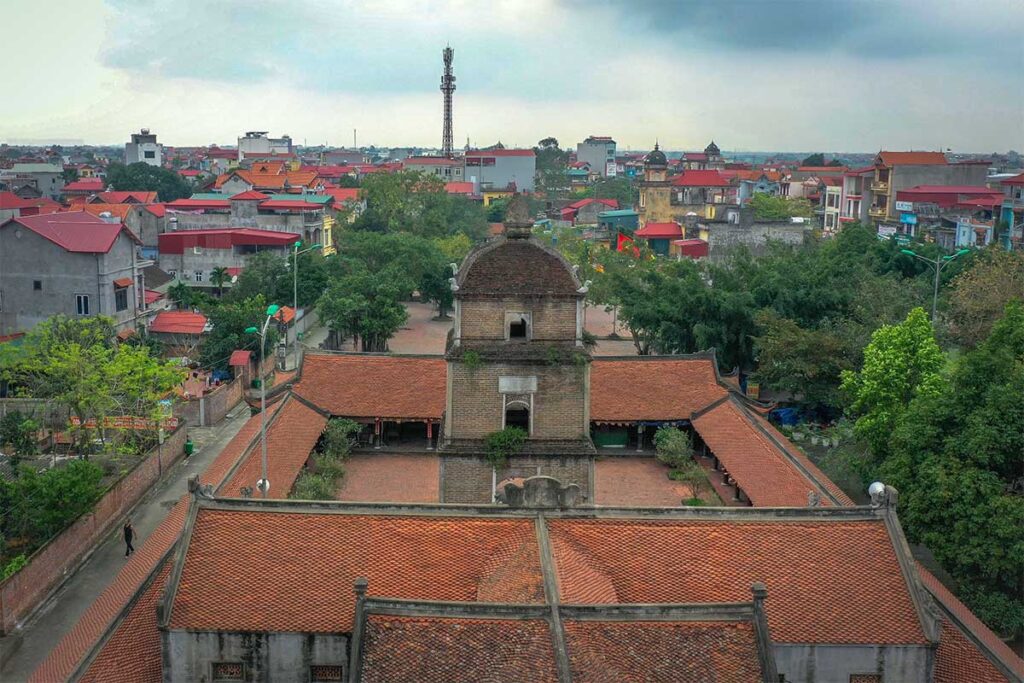
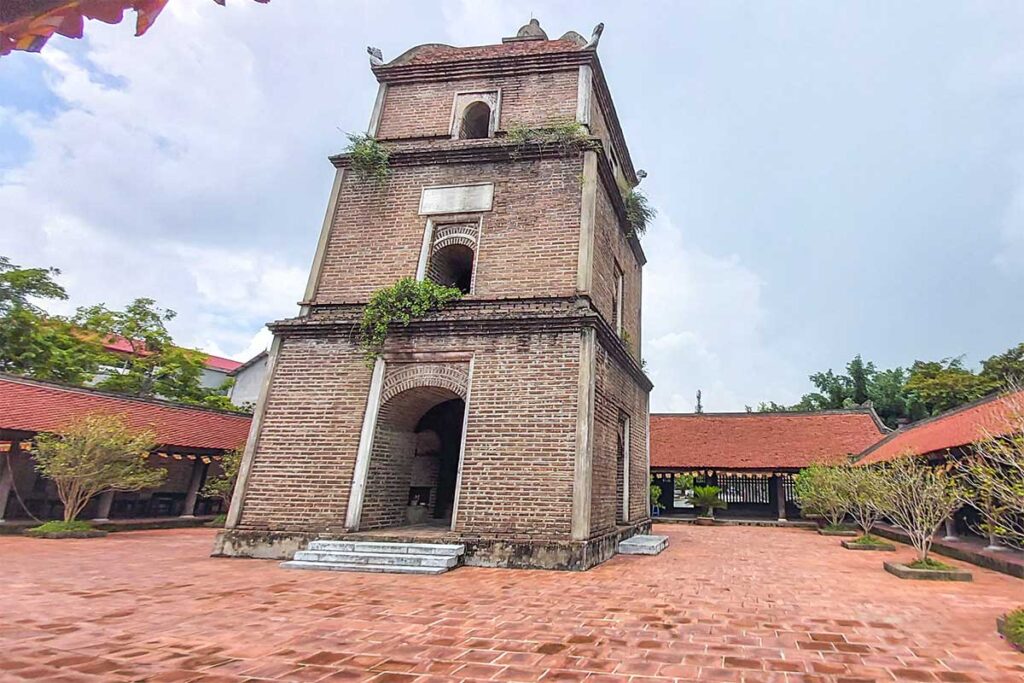
This three-tiered brick tower, built in 1737, is the most recognizable structure at the site. Originally six levels tall, only the lower three remain, but it still stands out for its historic charm and weathered beauty. It’s one of the most photogenic corners of the pagoda, especially framed by trees or against the sky.
2. Ancient Architecture and Courtyard Layout
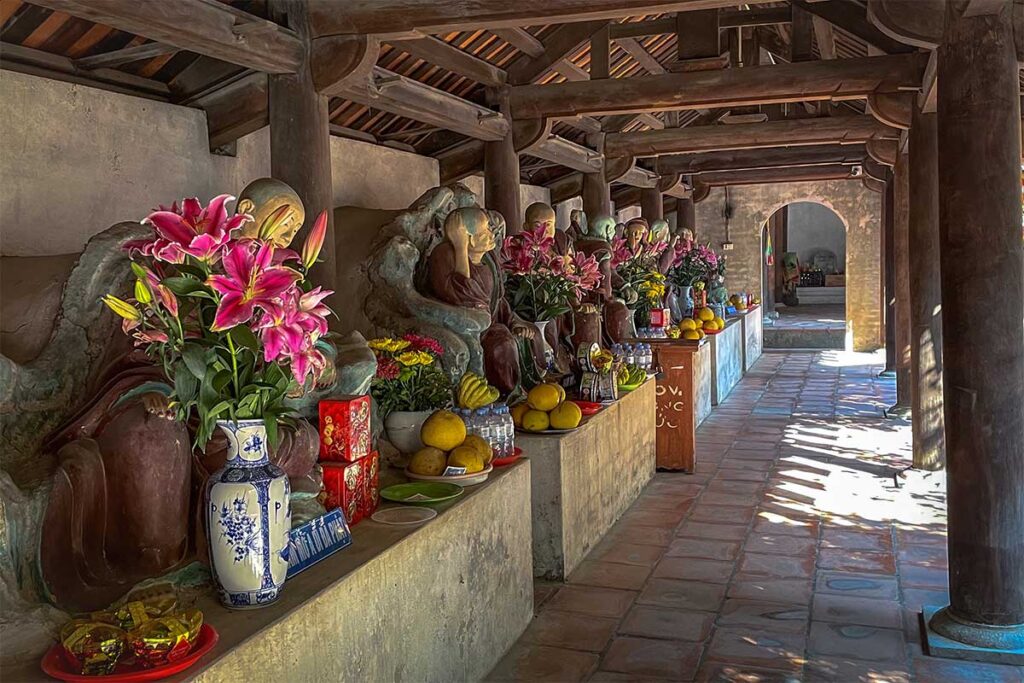
The pagoda follows a traditional “four-house” layout, forming a rectangular complex around a peaceful courtyard. You’ll find wood-carved doors, stone dragon steps, moss-covered tiled roofs, and various sculptures and artifacts from the Tran and Le dynasties. The shady garden paths and quiet spaces add to the old-world atmosphere.
3. The Burial Statues of Two Zen Masters
Inside the pagoda are two rare preserved monk statues, believed to be the actual mummified bodies of Zen masters Vu Khac Minh and Vu Khac Truong, who died in the 17th century. Unlike many relics, these statues were not chemically preserved—they’re displayed in glass shrines, seated in meditation, and remain a mysterious and spiritual highlight of the visit.
4. Spiritual Atmosphere and Worship
Dau Pagoda is still an active place of worship, regularly visited by locals for prayer and quiet reflection. You can light incense, observe daily rituals, or simply enjoy the peaceful energy of the site. It’s particularly lively during lunar calendar festivals, but even on quiet weekdays, the sense of devotion is easy to feel.
Location and How to Get There
Where is Dau Pagoda?
Dau Pagoda is located in Thanh Khuong Commune, Thuan Thanh District, Bac Ninh Province—about 25 to 30 km east of Hanoi. Travel time is typically 45 to 60 minutes by car, depending on traffic.
Important: Don’t confuse this site with another Dau Pagoda located in Thuong Tin (south of Hanoi). The Bac Ninh one is the historically significant site described in this guide.
Getting from Hanoi to Dau Pagoda
- Private car with driver – This is the most convenient and flexible option, especially if you want to combine your visit with other craft villages or temples nearby.
- Motorbike – Doable for experienced riders, but the road isn’t especially scenic or relaxing, and local signage may be limited.
- Public transport – Not recommended unless you’re familiar with the area. There’s no direct route; it requires a mix of regional buses and local connections, which can be time-consuming and unclear for most travelers.
Nearby sights to visit
If you’re making the trip out to Dau Pagoda, it’s worth turning the day into a fuller itinerary. Here are some nearby sights you can easily combine:
But Thap Pagoda
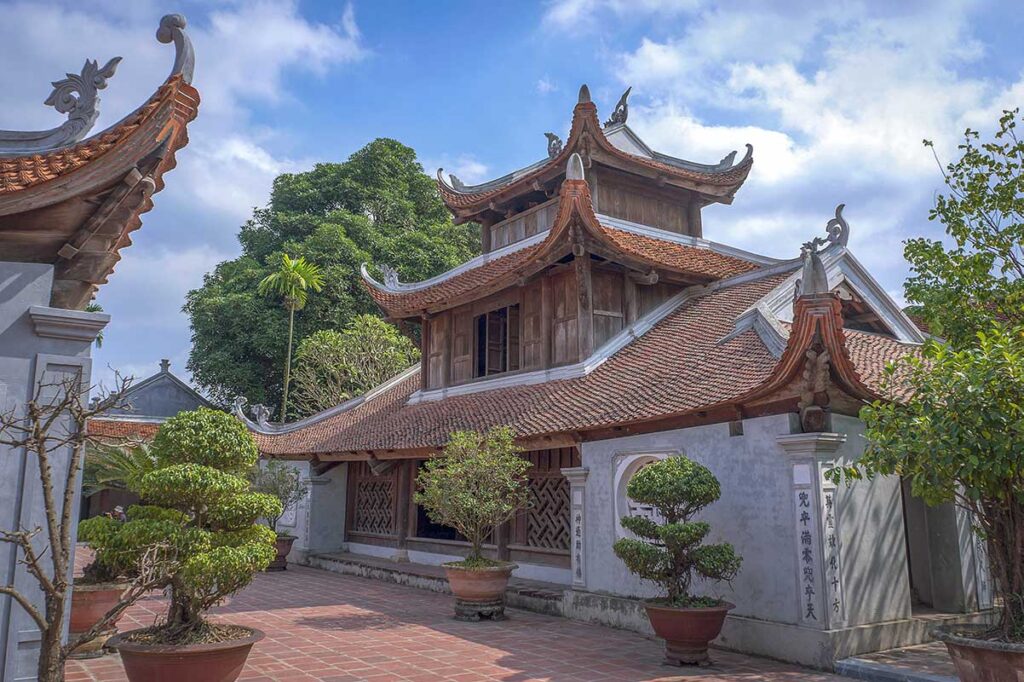
Only 4 km from Dau Pagoda.
One of northern Vietnam’s most beautiful and historic temples, known for its wooden architecture and famous thousand-handed Guan Yin statue.
➤ Read our full guide to But Thap Pagoda
Dong Ho Painting Village
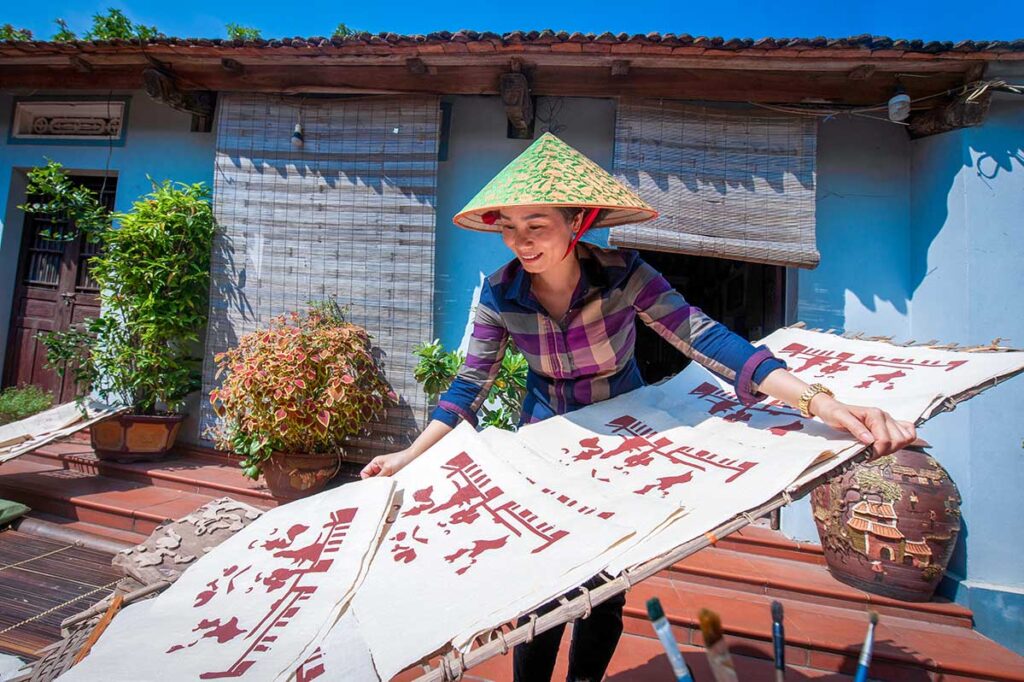
Just 6 km north of Dau Pagoda.
Known for its traditional woodblock folk paintings, handmade with natural dyes and dó paper.
➤ Read our full guide to Dong Ho Painting Village
Nom Village and Pagoda
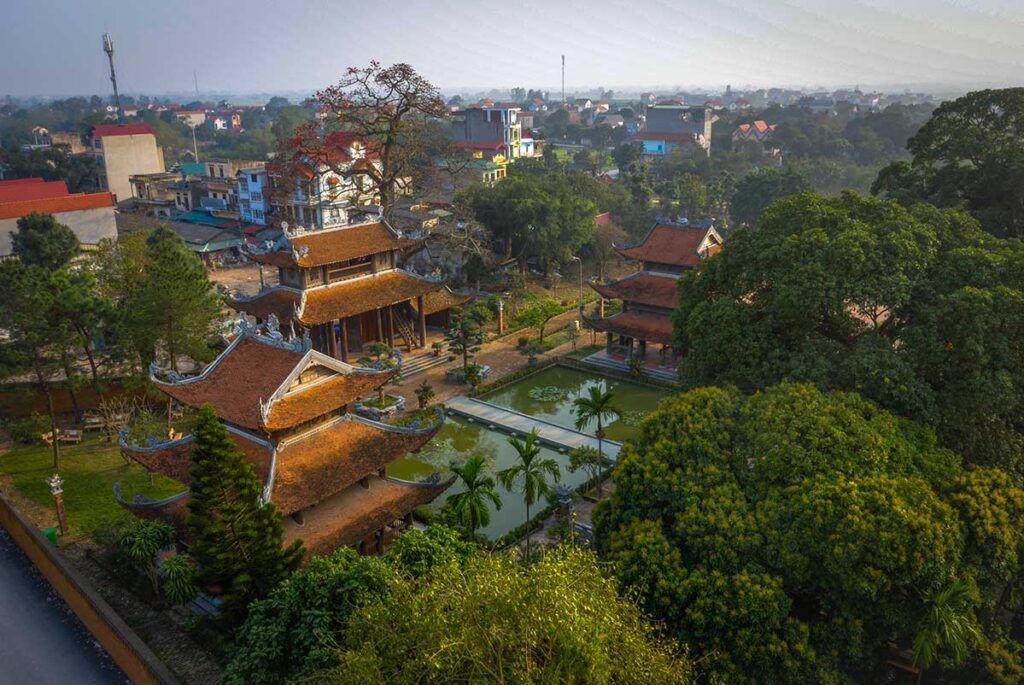
Located about 10 km south, near the Duong River.
A quiet, preserved village with tiled-roof houses, a scenic pagoda, and tranquil atmosphere.
➤ Read our full guide to Nom Village
Bat Trang Pottery Village
Around 16 km west—a bit of a detour, but very doable en route from Hanoi.
Vietnam’s most famous pottery village, more commercial but ideal for browsing shops and trying pottery-making.
➤ Read our full guide to Bat Trang
Local Temples and Markets
The countryside around Dau Pagoda is dotted with small temples, pagodas, and rural markets.
These aren’t listed in most guidebooks, but worth exploring if you have a local guide or driver—great for spontaneous stops and a more authentic feel. Use Google Maps to spot names or follow your curiosity.
For more tips, read our Bac Ninh travel guide.
Is Dau Pagoda worth visiting?
Yes—if you’re already interested in old temples, Vietnamese Buddhism, or off-the-beaten-track heritage sites, then Dau Pagoda can be a rewarding visit. It’s historically significant (arguably the oldest Buddhist temple in Vietnam), and the burial statues and Hoa Phong Tower are genuinely unique.
But let’s be honest—it doesn’t necessarily look better than many temples and historical sites in Hanoi, which are better preserved and more atmospheric. If you’re short on time, you’re better off exploring Hanoi’s major landmarks first.
That said, if you’ve already seen the main sights in the city and want something more local and less crowded, Dau Pagoda makes sense—especially when combined with nearby places like Dong Ho Painting Village or Nom Village. On its own, it’s probably not worth a dedicated 1.5-hour round trip, but as part of a cultural day trip, it fits well.
